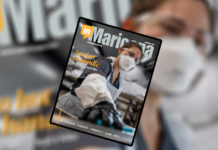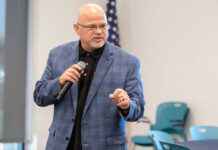
What is Hydrogen Sulfide? Is your child being exposed to dangerous levels?
Hydrogen sulfide (H2S) is a potentially lethal gas. It is colorless and has the distinctive odor of rotten eggs. It can accumulate in manure pits or waste holding tanks, as well as in other low areas of factory-farm style livestock facilities (also known as CAFOs). It is produced by anaerobic bacteria and the decomposition of protein and other sulfur containing organic matter. Released as a gas, it can remain in the atmosphere for an average of 18 hours. Children are more vulnerable to exposure than adults.
Effects and Symptoms of being exposed to H2S:
· Headaches
· Coughs / Bronchitis
· Nausea and vomiting
· Impairment of sense of smell
· Problems with balance, visual acuity, recall and memory
· Vertigo
Effects can be delayed for several hours, sometimes several days.
According to CAFO Air Pollution and Children: A Prescription for Precaution, “children and infants are among the most susceptible to many of the air pollutants. In addition to associations between air pollution and respiratory symptoms, asthma exacerbations, and asthma hospitalizations, recent studies have found links between air pollution and pre-term birth, infant mortality, deficits in lung growth, and possible development of asthma.” (See also, American Academy of Pediatrics Committee on Environmental Health.“Ambient Air Pollution: Health Hazards to Children.” Pediatrics Vol. 114 (6). December 2004.
According to Concentrated Animal Feedlot Operations (CAFOs) Chemicals Associated with Air Emissions, there are potential public health effects of living near CAFOs. “Gases and vapors are emitted from animal containment buildings, manure piles and lagoons, and from land applications of waste materials. These compounds result from the microbial degradation of urine and feces. While the complete list of gases and vapors emitted from CAFOs is long, those most commonly found include ammonia, hydrogen sulfide and methane.”
Because of concern over local air pollution, the schools in Maricopa are participating in the Air Quality Flag Program to alert people of harmful air conditions. However, the flag program is only meant to alert people of high levels of particulates in the air. “The Air Quality Flag program helps children with asthma/chronic respiratory disease, their parents and school personnel to be prepared to take action when air pollution levels are high using color coded flags.”
If you have seen a flag at the schools, now you know why and what they represent. But once again, the only type of pollution that is being addressed and monitored for is particulates. In fact, a Good-Flag / No-Dust day does NOT mean gaseous toxins are gone!
When casually talking with nurses at a Maricopa School, I was told that, even though a Green Flag is showing for that day, it seems like there are still a lot of children being treated with nebulizers.
There needs to be a monitoring system and Flag Program for Hydrogen Sulfide!
Have you asked yourself: “How many homes have children with nebulizer machines? Why do so many children in the city of Maricopa need these machines? Why are there so many children being treated at the schools with nebulizers? Do they all have asthma? But why are there so many? Why are children being put on antibiotics every 2 to 3 months? Why can’t a child just get a ‘normal’ cold?”
How often do we send our children out to walk or ride their bikes and/or scooters to school in this “rotten egg” smell? What levels of hydrogen sulfide are they being exposed to in the early morning hours? How do the children react to the smell, what do they know about it?
With their parent’s permission, I asked a couple of children what they think of the rotten egg smell. Here is what they had to say…
J.E age 8: “It smells like something died outside, and I don’t want to play outside until that stinky air is gone.”
C.E. age 6: “When it stinks outside, I want to run inside and throw up.” (He uses a nebulizer treatment for breathing-related issues.)
G.D. age 16: “It’s just plain nasty, the odor” (Once he was so sick from coughing he had to have a steroid injection at the urgent care. He has had continued steroid and antibiotic treatments and now uses an inhaler.)
X.E. age 5: “It smells like poopoo outside” (He uses a nebulizer treatment for breathing-related issues.)
Mom with a 19-month-old baby: “My baby had to be put on a nebulizer just recently due to a persistent cough that congested the babies lungs. The insurance company did not cover the machine–just covered the medication.”
S.G. age 6: Her mom mentioned that S.G. uses a nebulizer that has currently been changed to something stronger for breathing related issues.
A.B. age 16: “The smell is horrible…like something bad is in the air. For the past 2 to 3 weeks I have been feeling dizzy and nauseated.”
D.S age 14: “I hate living here. I feel sick all the time with headaches and nausea.”
J.S. age 12: “It really stinks bad outside, and sometimes the smell comes inside my house.” Mom said he has been sick more often than usual and has missed a lot of school since they’ve moved here. She also hesitates to let him go outside and play for his health’s sake.
Not only is H2S invading the outdoor air, it invades the homes through doors and window seals, air/heat ducts, microwave and dryer vents, and bathroom ceiling exhaust fan ducts throughout the night as we and our children are sleeping.
We need to know the level of exposure of H2S that our children are being exposed to. H2S can be extremely poisonous, and high levels of exposure can be deadly to our little ones. See http://emedicine.medscape.com/article/815139-overview.
If we don’t know what levels of exposure we are experiencing, who does? Our city government? Pinal County Air Quality Control District? ADEQ? EPA?
I believe no one will know until our government officials invest in an H2S monitor to collect air samples. Isn’t it our government’s job to protect the public health and welfare?
Please contact the below Departments and request not only to continue monitoring the particulate pollution in Maricopa, but hydrogen sulfide as well. We must demand this of our public officials for the sake of our children.
City of Maricopa: Mayor Anthony Smith 520-316-6828
[email protected]
Pinal County Air Quality Control: Donald P. Gabrielson, Director 520-866-6929 [email protected]
ADEQ: Acting Director Ira Domsky 602-771-2308 [email protected]
EPA Region 9: Jared Blumenfled, Administrator 415-947-8000
By Yvonne E. Cano, For more information, visit Helping Our Polluted Environment (HOPE)
Submitted photo
InMaricopa.com runs, on a regular basis, opinion pieces submitted by community members. The following article is the opinion of the author, and does not necessarily reflect the views of InMaricopa.com
Have an opinion you’d like to share with Maricopa? Please email it and any applicable photos to [email protected] for consideration.









![Alleged car thief released without charges Phoenix police stop a stolen vehicle on April 20, 2024. [Facebook]](https://www.inmaricopa.com/wp-content/uploads/2024/04/IMG_5040-218x150.jpg)





